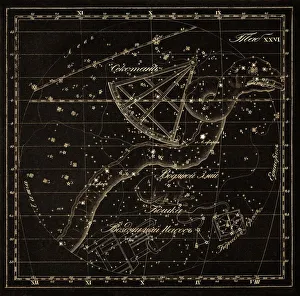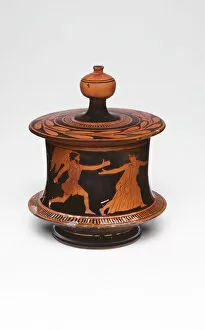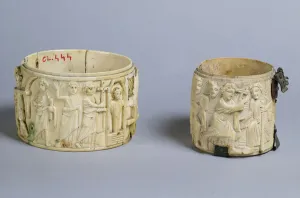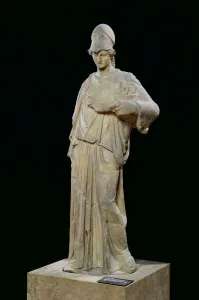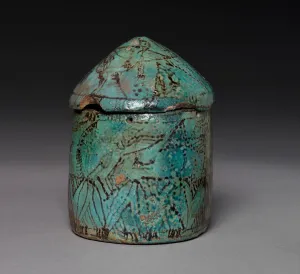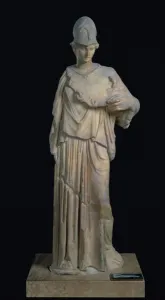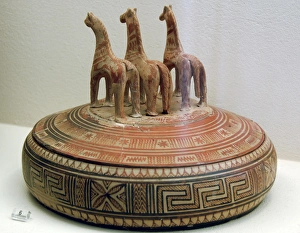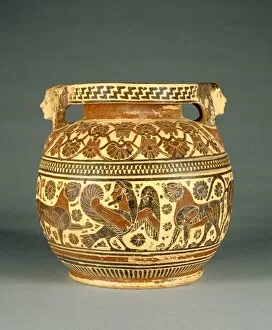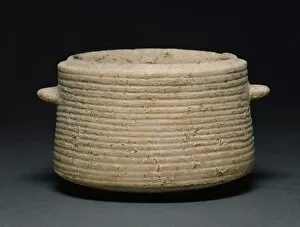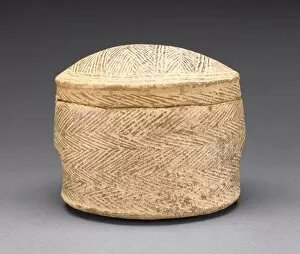Pyxis Collection
In ancient Greece, the pyxis was not just a simple container for personal objects; it was a symbol of elegance and sophistication
All Professionally Made to Order for Quick Shipping
In ancient Greece, the pyxis was not just a simple container for personal objects; it was a symbol of elegance and sophistication. This captivating engraving showcases a lady seated gracefully with her umbrella, footstool, and pyxis - or jewel box - in hand. The attention to detail is astounding as every line on the vase tells a story. The geometric patterns adorning this particular pyxis transport us back to the Greek Geometric period, and is fascinating how such intricate designs were meticulously crafted by unknown creators over 2, 500 years ago. Their skillful hands transformed these containers into works of art that have stood the test of time. As we gaze upon this miniature masterpiece from 300-270 BCE, we are reminded of the Hydra constellations that grace its surface. These celestial beings seem to dance across the pyxis, adding an ethereal touch to its already enchanting presence. From 730-720 BCE to as late as the 1st century CE, various artists left their mark on these vessels. Each creator brought their unique style and flair to their work, leaving behind a legacy that continues to captivate us today. The pyxis served not only as storage but also as an expression of one's status and taste. Its delicate form and exquisite decoration made it highly sought after by those who appreciated beauty in all its forms. This collection of pyxides offers us a glimpse into ancient Greek society - where craftsmanship met functionality and artistry merged with practicality. They remind us that even everyday objects can hold immense cultural significance if given proper care and attention. So let us marvel at these remarkable artifacts from centuries past - symbols of creativity, ingenuity, and timeless beauty preserved for generations to come.

